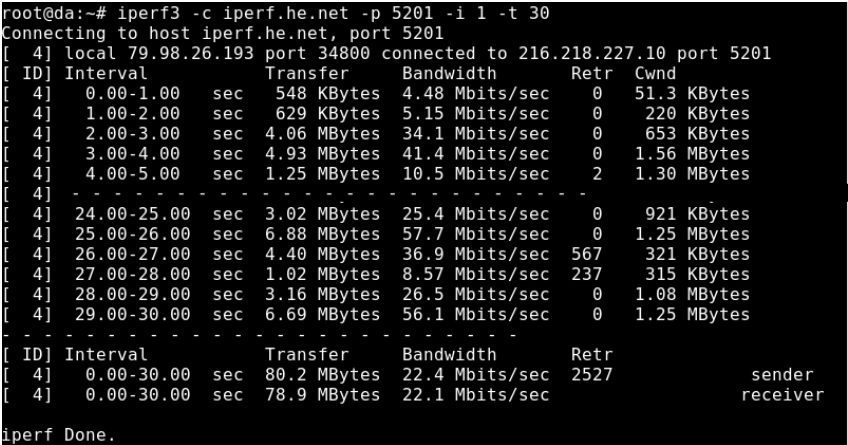
iPerf3 is a tool designed for active measurements of the maximum achievable bandwidth on IP networks. It supports tuning of various parameters, including timing, buffers, and protocols (TCP, UDP, and SCTP with IPv4 and IPv6). For each test, it reports bandwidth, loss, and other key metrics. This implementation is new and shares no code with the original iPerf; it is not backward compatible. The original iPerf was developed by NLANR/DAST, while iPerf3 is principally developed by ESnet / Lawrence Berkeley National Laboratory. It is released under the three-clause BSD license.
This tutorial has been tested with our "CentOS 7" and "Ubuntu 16.04" templates and is intended to work on our self-managed virtual private servers.
WARNING
CentOS 7 reached its End of Life (EOL) on June 30, 2024:
CentOS Blog
Due to this, you may encounter some issues with repositories. We recommend reinstalling an operating system that has not yet reached EOL.
If you are using CentOS 7 and experience a mirror issue, please consult this guide to resolve the problem.
0. Preliminary Requirements
A "CentOS/Debian/Ubuntu" operating system installed on the server.
1. Installing iPerf3 on the Server
To install iPerf3, simply run the appropriate command according to your operating system:
CentOS:
yum install iperf3 -y
Debian/Ubuntu:
apt-get install iperf3 -y
2. Testing Speed with Our lg.time4vps.com
To test network speed using our looking glass, first run the iPerf3 server:
iperf3 -s
Next, visit our looking glass page and enter the necessary information:
[lg.buycheapvps.com](Network information)

3. Testing Speed with iPerf3 Public Servers
To test network speed with remote iPerf3 public servers, select one from the list:
iperf.fr/iperf-servers.php
After selecting a remote host, execute the following command:
iperf3 -c remotehost -p port -i 1 -t 30
Make sure to replace remotehost and port with the appropriate values.

For more information about iPerf3, visit their website: iperf.fr